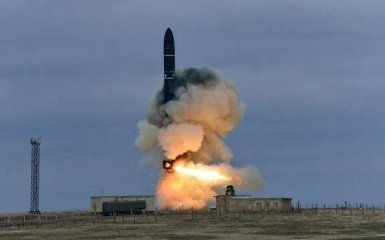In the Russian Federation, a nuclear intercontinental ballistic missile RS-28 "Sarmat" or "Satan" exploded during a test.
Points of attention
- An RS-28 Sarmat or Satan intercontinental missile exploded at the Plesetsk cosmodrome during testing.
- Satellite photos showed a crater at the site of the launch pad, indicating the scale of the explosion.
- Experts believe that such disasters during rocket tests occur rarely, with the last such situation in 1960 at the Baikonur Cosmodrome.
- In February 2024, Vladimir Putin announced the deployment of the Sarmat missile to the troops, although according to information, it could explode during tests.
What is known about the explosion of a ballistic missile in the Russian Federation
OSINT analyst MT_Anderson published a satellite image of the Russian Plesetsk cosmodrome after the rocket explosion.
As you can see in the photo, only a crater remained at the site of the launch pad.
My thanks to @MT_Anderson for providing this Planet Labs imagery and allowing me to publish it with comments.
— MeNMyRC (@MeNMyRC1) September 21, 2024
As is readily apparent, the RS-28 Sarmat test was a complete failure. The missile detonated in the silo leaving a massive crater and destroying the test site. The… https://t.co/FuKIaTNFVs pic.twitter.com/AuIpQRrDLa
As can be seen from the given picture, the launch of the rocket could have taken place from a mine launcher, the launch was unsuccessful and it ended with such a large-scale explosion that only a crater remained at the place of the launch pad, the post says.
It is noted that RS-28 "Satan" or even "Sarmat" exploded beforehand. It happened between September 20 and 22, 2024.
By itself, the explosion of an intercontinental missile during a test launch is a disaster that can happen literally once in half a century. Because the previous similar episode, which can be recalled here, was an explosion in October 1960 at the Baikonur cosmodrome during the first test launch of the R-16 intercontinental ballistic missile, the media note.
As the Ministry of Defense of the Russian Federation claimed, the only successful rocket launch from the Plesetsk Cosmodrome took place on April 20, 2022. Despite this, the illegitimate president of Russia, Vladimir Putin, claimed in February 2024 that the Sarmata missile had already been delivered to the troops.
Researchers have discovered the location of the Burevisnyk nuclear missile of the Russian Federation
Using satellite images, American researchers Decker Eveleth and Jeffrey Lewis discovered the likely deployment location of the Russian nuclear-powered Petrel cruise missile.
According to Eveleth, there are nine horizontal launch pads, arranged in three groups inside high berms, designed to protect against attack or detonation from an accidental explosion.
He told Reuters that this facility, located 475 km north of Moscow, "is intended for a large stationary missile system, and the only large stationary missile system that they (Russia — ed.) are currently developing is the Burevisnyk."
Eveleth and Lewis believe that the deployment of the Stormwind near Vologda, where the nuclear warheads are located, will allow the Russian military to quickly launch the weapon if necessary

